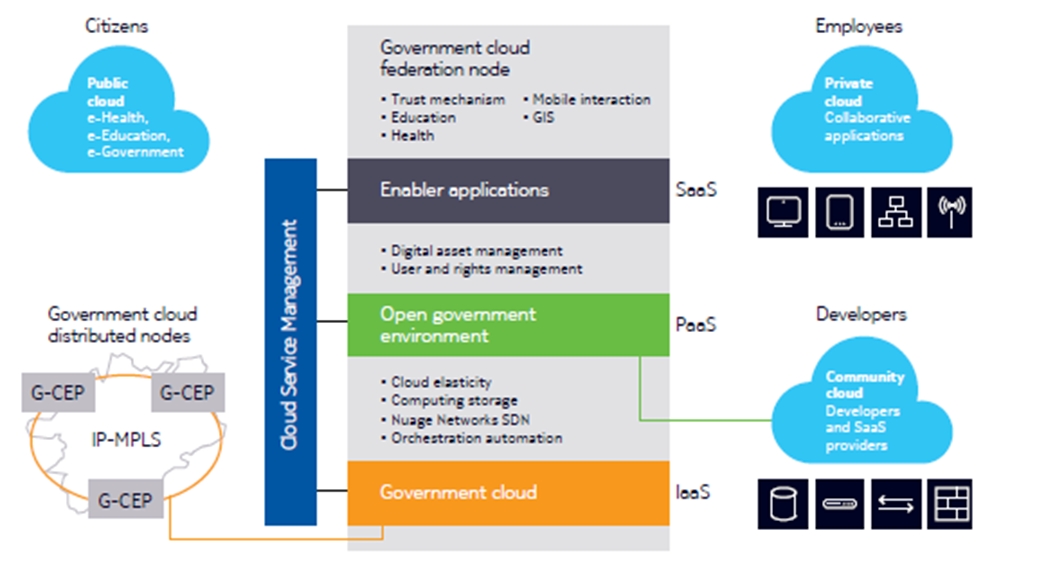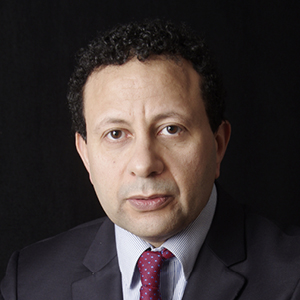Industry Thought Leadership
Transforming Government Services: The Value of Government Cloud Enablement Platform
June, 2017A new era of government services
All over the world, governments are using information and communications technology—or ICT—to provide unprecedented levels of service to their citizens. They are creating public sector aggregation networks that allow agencies to communicate with each other securely. They are spearheading open data initiatives that make their operations more transparent. They are leading the way to the future with large-scale transformation projects like these that are changing lives.
Opportunities exist for stakeholders at every level of government to take the initiative, to build applications or databases, and address the day-to-day issues faced by the public they serve. But the grassroots approach brings its own set of challenges. Schools and universities, hospitals, social services, municipal offices—each government organization has its own IT infrastructure. Development is happening in these isolated IT silos. And that means considerable duplication and waste.
The challenge: there is a need to find ways to consolidate government’s digital assets and maximize common processes, without squelching the grassroots initiative that is doing so much to transform how governments interact with citizens.
Distribute resources, centralize control
Nokia’s Government Cloud Enablement Platform—or G-CEP—addresses this need. Nokia has designed an inclusive, end-to-end approach that allows to capture and streamline government’s grassroots services development through a distributed open cloud infrastructure.
G-CEP brings localized computing, storage and network resources to individual departments, while the Government Cloud service provider controls those resources from a central location as a virtually single datacenter. In doing so, G-CEP consolidates the IT silos. And it encourages teams on the ground to create and build services that can be broadly shared, bringing real value to the public.
The benefits of the distributed cloud
The Nokia G-CEP business model takes advantage of distributed cloud technology. It combines the benefits of a centralized management system with distributed datacenter resources in a scalable architecture.
The different public service organizations benefit from local computing, storage and network resources that live on the premises, bringing very low latency and high service quality to the people these teams serve. G-CEP provides a unified view, controlling these distributed resources from a central location as a single, virtual datacenter.
G-CEP offers more than cloud infrastructure services. It also offers platform services that can be opened to application developers. The developers build and share, with each application and dataset becoming a foundation for the development of more end-user applications. This is called Government as a Platform—or GaaP.

A turnkey implementation
The Nokia’s Government Cloud Enablement Platform offers three layers in a turnkey implementation.
- G-CEP IaaS: Government distributed cloud infrastructure
The Infrastructure as a Service—or IaaS—layer of G-CEP is a distributed cloud infrastructure. At its core is a single G-CEP federation node that provides a centralized cloud orchestration and management system. Distributed cloud nodes embed network, server and storage infrastructure locally. - G-CEP PaaS: Open government environment
Our open government environment (OGE) is G-CEP’s Platform as a Service, or PaaS, layer. It is an open API platform that provides an open, secure, controllable gateway through which government’s digital assets can be shared with application developers, SaaS providers, and those who own datasets.
Software procurements are changing from a classical, license-based model to a Software as a Service model. OGE allows to embrace this model while maintaining control of government’s digital assets and operational costs. It also allows access by domain to comply with the different policy require¬ments across such various areas as health, finance and public safety. - G-CEP SaaS: Enabler applications
And here’s the payoff: A streamlined environment that fosters innovation and the successful deployment of new services based on shared enabler applications.
The G-CEP SaaS layer provides common software tools and processes—Enabler Applications such as authentication, e-signature, or mobile communications— which can then be embedded in new end-user applications. These enabler applications are agency agnostic, can be shared by all government bodies, and are accessible via programming interfaces exposed in the G-CEP Open Government Environment.
Through the G-CEP IaaS and Paas, the G-CEP can enforce common processes and foster the sharing of digital assets such as enforcing a unique authentication mechanism on all applica¬tions, imposing one source of document certification, or even encouraging application developers for instance to use a common communication function to optimize costs.

